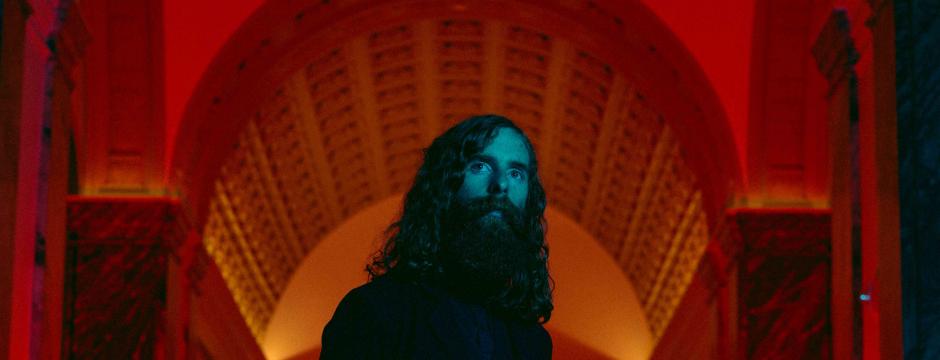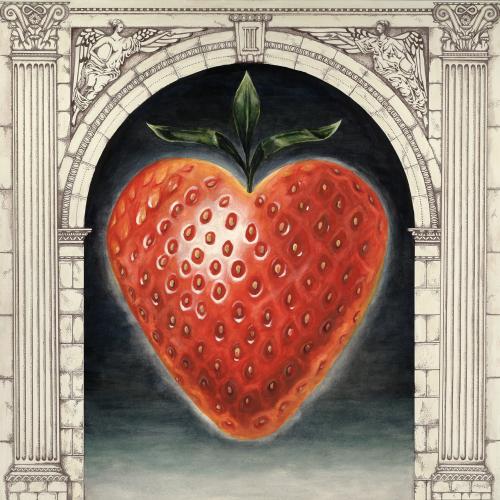Band: Saintseneca
Album: Pillar of Na
VÖ: 31.08.2018
Label: ANTI- / Indigo
Website: www.saintseneca.com
Saintseneca’s Zac Little has been thinking a lot about memory. Not necessarily his memories, though they creep in often, too. Rather, he mulls over the idea of memory itself: its resilience, its haziness, how it slips away as we try to hang on, the way it resurfaces despite our best efforts to forget.
Memory is the common thread running throughout the Columbus folk-punk band’s fourth album, Pillar of Na, arriving in late summer via ANTI- Records. Following 2015's critically lauded Such Things, the new album’s name is rooted in remembrance, referencing the Genesis story of Lot’s wife who looks back at a burning Sodom after God instructs her not to. She looks back, and God turns her into a pillar of salt. “Na,” meanwhile, is the chemical symbol for sodium.
“I wanted to interrogate memory," Little says. "The collective and personal, to find what is true. How closely does the ghost conjured resemble the person who once lived?"
But back to the story for a moment: Didn’t Lot's wife have ample warning not to look back? Little, who specializes in moody, complex songwriting that consistently experiments with obscure instruments like the bouzouki and the Bulbul Tarang, feels sympathy for the Salt Woman. “The story has a certain kind of foreboding nature to it,” Little says. “It’s trying to look back at where you come from and make sense of it. I think I would have looked back.”
Like Lot's wife, Little cannot help but revisit where—and how—he grew up. Raised in church in southeastern Appalachian Ohio, he took up preaching when he was still a teenager, sometimes in small country settings and other times to congregations of thousands. But these days he's more interested in listening. And questioning.
"I'm on a mystical journey, struggling to figure out what the point is," he says. "Dogma is like naming a mountain—you can stab all the flags you want into the dirt, but it doesn't make it any more yours. Truth belongs to no one, and I'd rather climb."
Truth is precisely what he attempts to explore on Pillar of Na. Produced by Mike Mogis (Bright Eyes, Rilo Kiley), Pillar of Na took much longer to finish than Little initially envisioned. After completing what he thought would be the finished album, Little instead pushed himself further. “I wrote three records worth of material," he says. "Initially, I think I was a little afraid to finish some of these songs. They felt close and important to me. I really wanted to get it right, and finally it felt like it was time—the baby had to get born.”
Songs like the epic, flute-accented title track have been in the works for 11 years.
And then, in the sometimes-frustrating heat of trying to find the songs, other tracks poured out of him, like the springy “Ladder To The Sun,” which Little says he didn’t see coming at all. “That was catharsis,” he says. "I was feeling frustrated, lost, and burnt out by the whole process, wondering where I was in my life at that moment. Writing 'Ladder To The Sun' felt like a productive cry.”
The words "Who says you’re right?" present a challenge to authority. “No one remembers the day they are born, you gotta take someone else’s word for it," Little says. "Everyone trusts someone."
With the orchestral “Beast in the Garden,” lyrical imagery referencing the Garden of Eden (“In the valley of milk and honey / I want a cup overrunning...”) is used as metaphor. What interests Little is, “The idea that Adam and Eve, after they’ve sinned, get kicked out of the garden, and somebody was set on guard at the gate to prevent their return.”
This also ties to the concept of remembrance for Little. "Thinking about the past, it brings you to the moment you inhabit. But at the same time you’re very much estranged from it. You feel nostalgic, or idealize the past, but are cut off from it.”
Little continues: "I fell in love with a historian while I was writing Pillar of Na. I got to help her with a little archival research. The archivist dredged up boxes upon boxes packed with all kinds of documents— letters, receipts, manifestos. More than I could have ever sifted through. I realized the past can look very different depending on which boxes you open.
"Memory is subjective. History is political. Some stories are suppressed and others survive. Yet, the bits of the past we transmit into the present inform how we move forward. We end the way we envision."
The album’s cover also utilizes symbols of antiquity and rebirth, with a bright, heart-shaped strawberry framed within an elegant arch. “It’s this thing that’s sweet and bright red, it wants you to eat it, it’s seductive,” describes Little. “It’s calling to you and asking you to bite it, eat it, and help the plant procreate. You eat the fruit and the plant eats you.”
The arch, meanwhile, once marked the entrance to Columbus Ohio’s Union Station, which was built in 1897 but has since been demolished. Today, the arch alone remains in Columbus’ Arena District, thanks to the efforts of a few determined individuals. “It sits there, holding nothing, other than the memory of a former place. Seeing the arch just got me thinking,” says Little, “I’ve lived in this city for 10 years—the amount of time I’ve been playing in this band. You have this weird feeling that the town is constantly erasing itself, and at some point you wonder, when does it become something different all together?”
Nostalgia resurfaces again on the mid-tempo “Frostbiter,” which opens with Little reflecting on the loss of his grandfather (“When Grandad died I got his knife / I cleaned the kitchen and I didn’t know why... Such is life”) before moving on to ruminate over how people lives change as they age. He remembers the story of a long-lost friend, “It felt like a former life, like a dream just remembered. Where are those kids we were? The reconciliation of past and present is a very surreal place.”
Musically, Pillar of Na is Saintseneca’s most ambitious album to date, with Little aiming to incorporate genre elements he’d rarely heard in folk. “I wanted to use the idiom of folk-rock, or whatever you want to call it, and to try to do something that had never been done before," Little explains. "To reach way back, echoing ancient folk melodies, tie that into punk rock, and then push it into the future. I told Mike Mogis I wanted Violent Femmes meets the new Blade Runner soundtrack. I'm looking for the intersection between Kendrick Lamar and The Fairport Convention.”
“You're always going to be situated in the folk legacy,” Little continues, acknowledging his past recordings, which include three albums (the aforementioned Such Things, 2014's Dark Arc, 2011's Last) and three EPs (2016's The Mallwalker, 2010's Grey Flag, and 2009's self-titled). “But let’s move forward. I'm not trying to make the lost Velvet Underground B-side. I want to find something that has never been heard before, or at least go down trying."



